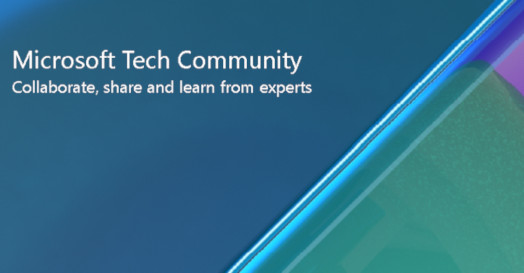Developers Rejoice! Azure Cache for Redis Enterprise Features to Make Your Job Easier (Preview)

Introduction
As a developer, you know how important it is to keep your applications secure and fast. That's why you'll be thrilled to hear about the latest features coming to Azure Cache for Redis Enterprise and Enterprise Flash. This month, Azure Cache for Redis Enterprise is releasing a set of exciting features for preview that not only improve developer efficiency but also enhance security.
Whether you're a seasoned developer or just starting out, there's something here for everyone. So, if you're ready to take your development to the next level, be sure to check out the detailed list of features released for public preview this April and get started with Azure Cache for Redis Enterprise today!
Developer Efficiency
Connection Audit Logging for Azure Cache for Redis Enterprise (Preview)
Azure Cache for Redis Enterprise and Enterprise Flash now offers a connection audit logs feature, which logs the client IP addresses for all connection and disconnection events. authentication events are also logged. This new feature improves logging capability and provides a way to track unsuccessful authentication attempts, which is crucial for many customers to prevent unauthorized access to their cache resources. Prior to this feature, logging in Enterprise-tier caches required a bespoke solution or running the expensive INFO command in the Redis er.
Flush Command for Active-Active Caches (Preview)
Enterprise and Enterprise Flash tier caches with active geo-replication can now be emptied (i.e., flushed) in a safer and more consistent way. The FLUSHDB and FLUSHALL commands are blocked by default on geo-replicated caches to prevent unexpected data loss, but now a control-plane operation is available to force flush the data in all caches in the same geo-replication group. This operation can be accessed through the portal or CLI/PowerShell, with Azure role-based access control roles used to limit access to specific users. With this new functionality, caches can be safely cleared without deleting the caches themselves.
Scaling Up & Out on Enterprise & Enterprise Flash (Preview)
Azure Cache for Redis Enterprise and Enterprise Flash tiers now offer in-place scale-out and scale-up capabilities, allowing customers to scale their current caches without creating new instances. With in-place scaling, users can simply select a larger SKU or capacity, and the cache will scale up or out in the background while maintaining active operation and without changing the cache name or URL. This feature eliminates the need for downtime during scaling and improves memory capacity, connections, and compute performance, allowing customers to streamline their workflow and boost efficiency.
Security
Customer Managed Keys for Enterprise Persistence (Preview)
Azure Cache for Redis Enterprise and Enterprise Flash now offers a preview of the ability to use a customer-managed key (CMK) for encrypted access to disk data, such as RDB or AOF persistence files. With this new feature, customers can manage access to encrypted cached data at rest and meet regulatory or security requirements using their own keys. This gives customers additional control over their encryption implementation by allowing them to wrap the Microsoft managed key with their own CMK, providing the ability to revoke access and meet compliance or secrecy requirements. Prior to this update, backup copies of data in Redis cache could only use Microsoft managed key (MMK) encryption.
Getting Started with Azure Cache for Redis
For more additional information on Azure Cache for Redis, the features listed above, and Redis, please see the resources linked below.
- Azure Cache for Redis Overview
- Azure Cache for Redis Pricing
- What’s New in Azure Cache for Redis
- Azure Cache for Redis Audit Logging Documentation
- Azure Cache for Redis CMK Encryption
- Azure Cache for Redis Flush cmd for Active-Active Caches Documentation
- Azure Cache for Redis Scaling Up & Out Documentation
- Best Practices: Scaling Azure Cache for Redis Enterprise and Enterprise Flash
Published on:
Learn moreRelated posts
Azure Backup Threat Detection
One Azure, Many Logins: How Users Access Microsoft’s Cloud Safely
Users can access Microsoft Azure through several flexible and secure methods, depending on their role, device, and workload needs. The most co...
Unlocking New Possibilities: Microsoft Azure Hyperscale AI Computing with H200 GPUs Accelerates Secure AI Innovation in Azure for U.S. Government Secret and Top Secret
As artificial intelligence continues to reshape industries and redefine the boundaries of innovation, Microsoft is proud to announce a leap fo...
Tata Neu delivers personalized shopping experiences for millions of users with Azure DocumentDB
With Azure DocumentDB, Tata Neu delivers seamless authentication for millions of users, accelerates credit card onboarding across partners, un...
From Backlog to Delivery: Running Scrum in Azure DevOps
This is a practical, end-to-end guide to run Scrum with Azure DevOps — from backlog grooming through sprint delivery and continuous deployment...